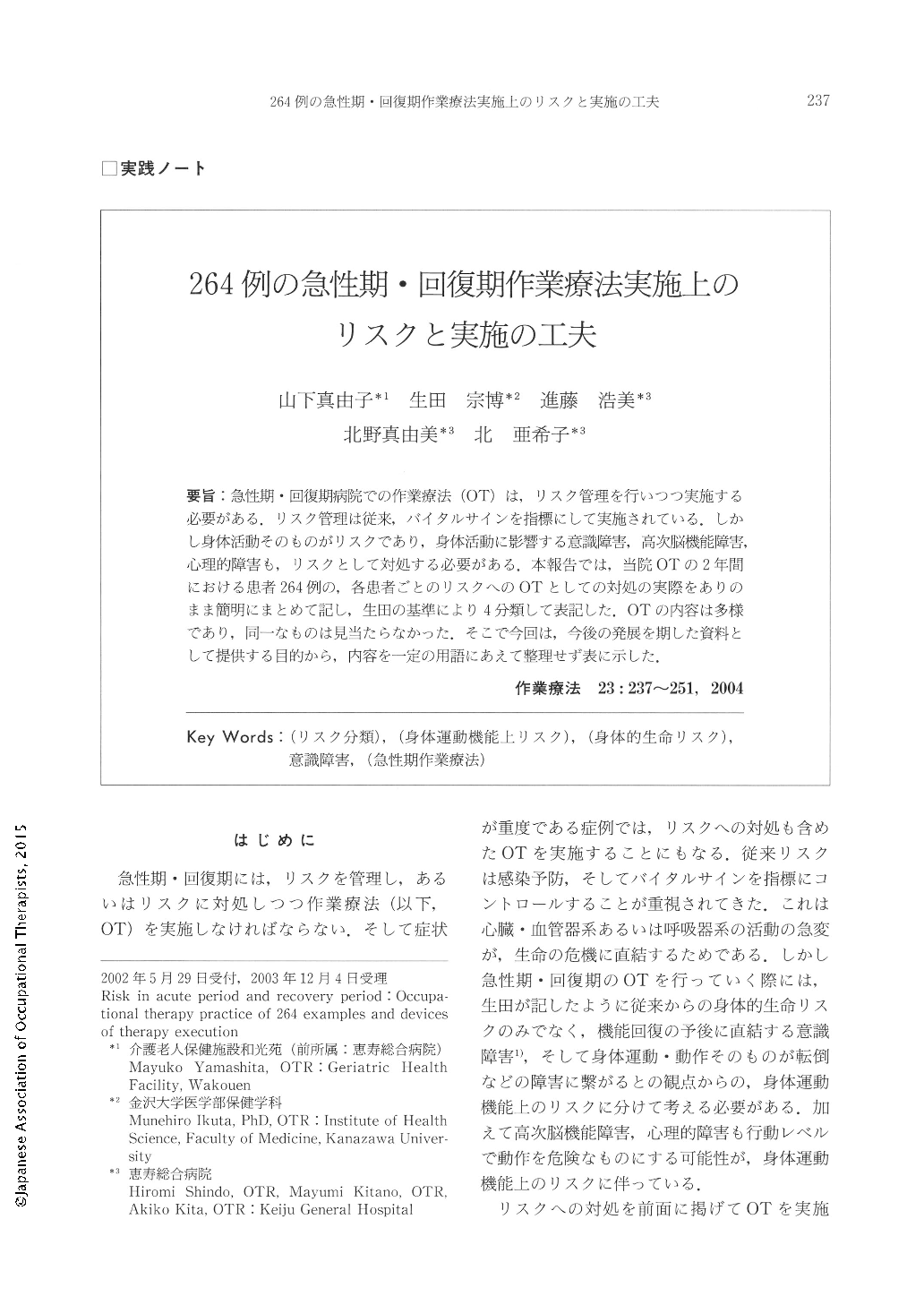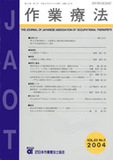Japanese
English
- 販売していません
- Abstract 文献概要
- 1ページ目 Look Inside
- 参考文献 Reference
要旨:急庄期・回復期病院での作業療法(OT)は,リスク管理を行いつつ実施する必要がある.リスク管理は従来,バイタルサインを指標にして実施されている.しかし身体活動そのものがリスクであり,身体活動に影響する意識障害,高次脳機能障害,心理的障害も,リスクとして対処する必要がある.本報告では,当院OTの2年間における患者264例の,各患者ごとのリスクへのOTとしての対処の実際をありのまま簡明にまとめて記し,生田の基準により4分類して表記した.OTの内容は多様であり,同一なものは見当たらなかった.そこで今回は,今後の発展を期した資料として提供する目的から,内容を一定の用語にあえて整理せず表に示した.
In occupational therapy, risk management is necessary during the acute period and recovery period. It has been considered important to implement risk management with vital signs as the telling index. In addition, researchers have come to realize the importance and necessity, in the clinical field, of recognizing and dealing with risk factors as they relate to consciousness disorders, higher cortical dysfunction, and psychological disorders. In this report, in our hospital and over a period of two years, we will examine 246 cases of risk management. Classified into four categories based on the Ikuta standard, we describe how occupational therapy deals with risk as it relates to each patient. The contents of occupational therapy as a method to cope with the risk of each patient differ from one to the other. So this time, foreseeing the further development in occupational therapy for risk management during acute and recovering periods, and for the purpose of providing a reference for it, it describes in a table the contents of the implementation of occupational therapy including coping devices for each and every case without necessarily organizing them into certain terms.

Copyright © 2004, Japanese Association of Occupational Therapists. All rights reserved.


